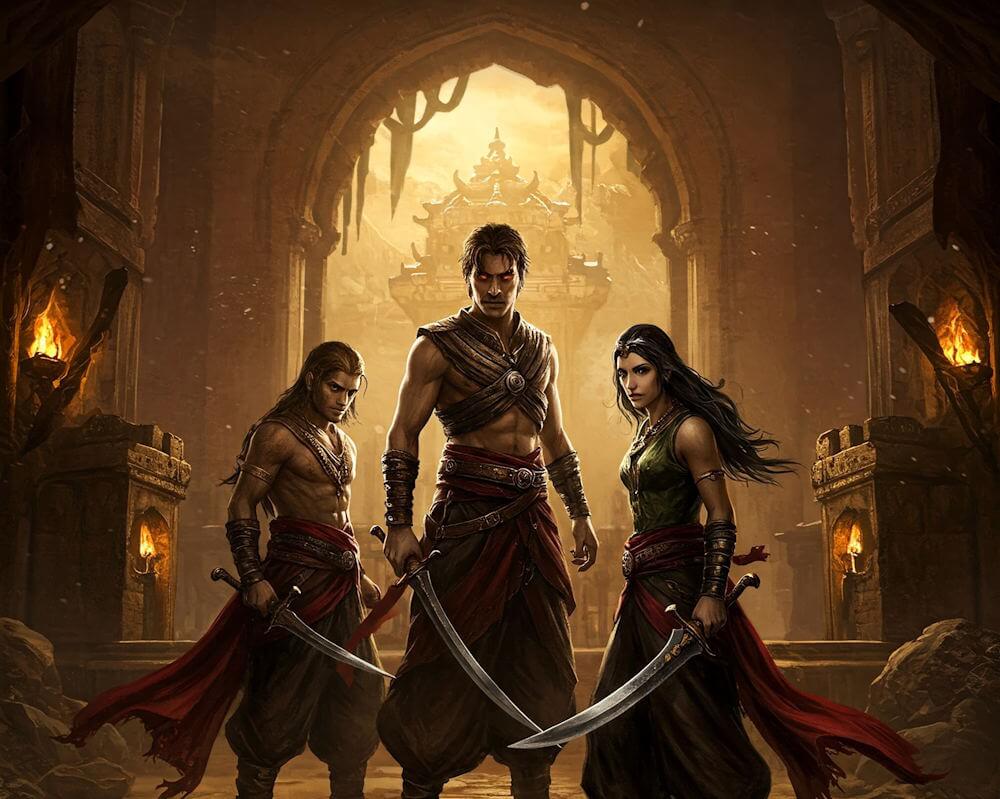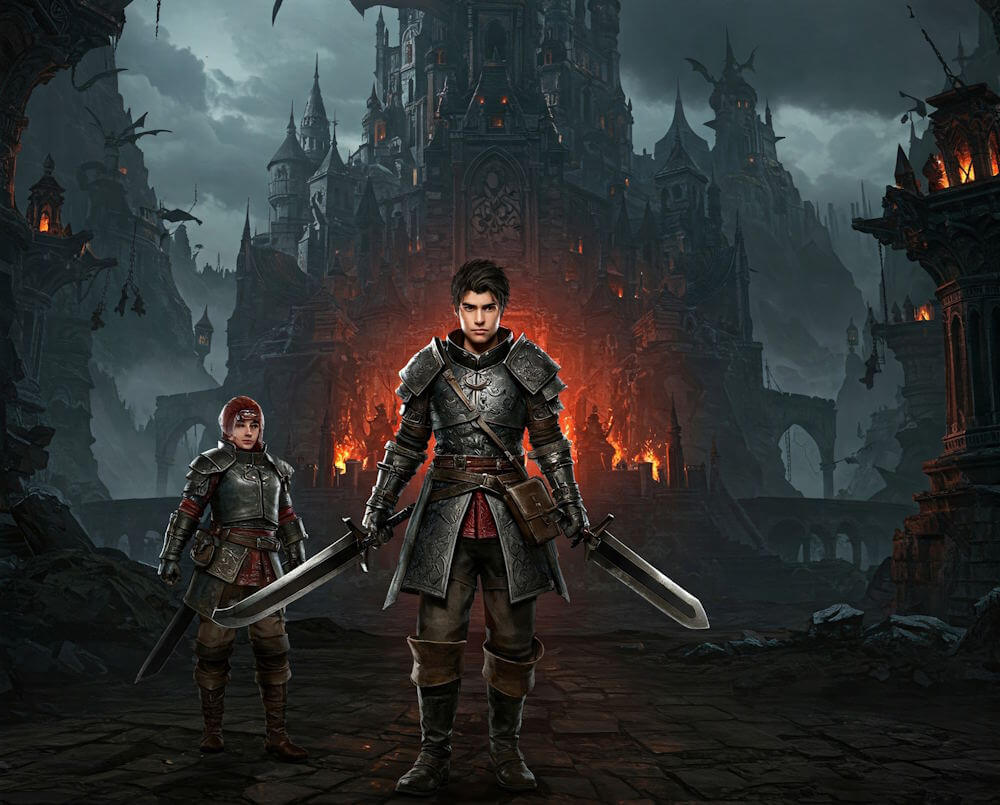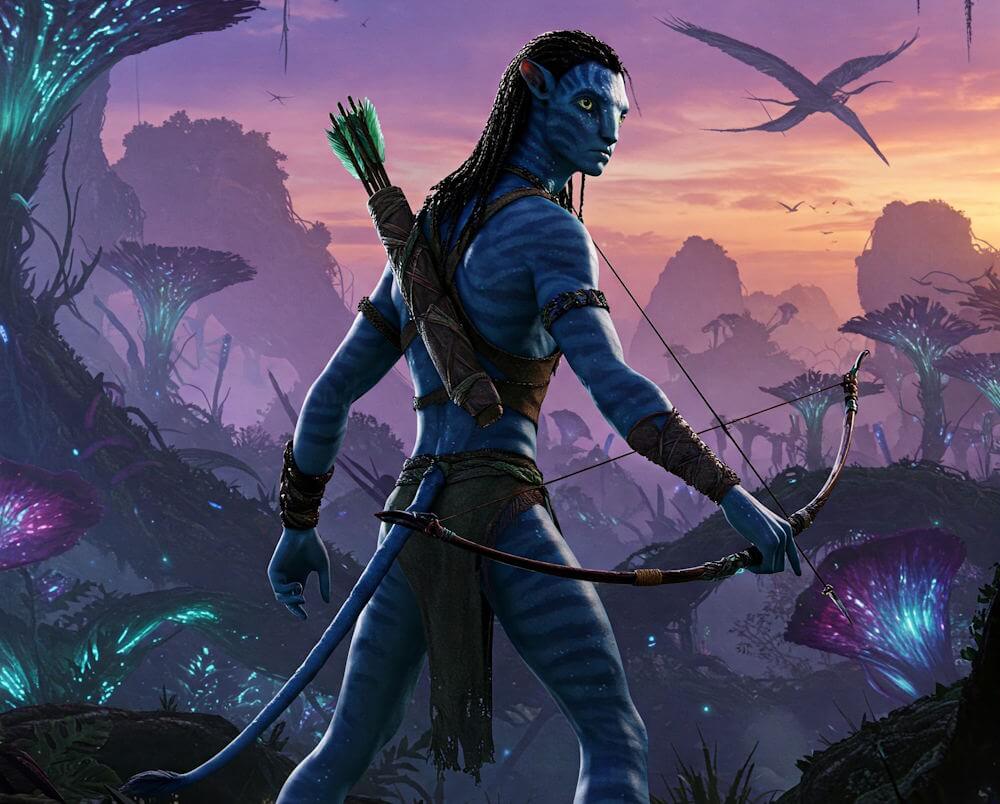A New Chapter in the Prince of Persia Legacy
The Prince of Persia franchise has carved a significant niche in the annals of video game history since its inception in 1989. Created by Jordan Mechner, the series revolutionized the platform genre, combining cinematic storytelling with intricate level designs and fluid animations. The original game introduced players to the titular Prince, who embarked on a quest to save a princess from the clutches of an evil sorcerer. This character, laden with depth, has resonated with gamers for decades, establishing a foundation that would see numerous sequels, spin-offs, and adaptations across various media.
Over the years, the franchise has seen a remarkable evolution, shifting from its pioneering 2D roots to 3D gameplay with titles such as ‘Prince of Persia: The Sands of Time.’ This transition not only expanded the scope of storytelling but also introduced players to a more immersive environment, enhancing the platforming mechanics and combat systems. With each installment, the series has pushed creative boundaries and set new standards in the gaming industry, affirming its legacy as a critical player in the evolution of action-adventure games. Yet, amid these advancements, fans have often reflected on the charm and simplicity of the original gameplay.
The latest entry, ‘Prince of Persia: The Lost Crown,’ represents a nostalgic return to these foundational 2D mechanics, igniting excitement among long-time enthusiasts of the series. This return to 2D gaming is not merely a gimmick; it honors the franchise’s roots while integrating modern design philosophies. The anticipation surrounding ‘The Lost Crown’ reflects a broader trend in the game industry, where developers are revisiting classic formats to recapture the essence of gameplay that characterized earlier eras. As we delve deeper into this new title, we will explore how it seeks to balance nostalgia with innovation, blending the charm of yesteryears with contemporary gaming expectations.
The Evolution of Prince of Persia: From 3D to 2D
The Prince of Persia franchise, created by Jordan Mechner, has undergone significant evolution since its inception in 1989. The original game introduced players to a challenging platforming experience that combined intricate level design with an engaging narrative set in ancient Persia. This early iteration was groundbreaking, showcasing fluid animation techniques that would come to define the series. As technology advanced, so too did the Prince of Persia games, transitioning into the 3D realm with titles like ‘Prince of Persia: The Sands of Time,’ released in 2003. This trilogy not only expanded the lore but also refined gameplay mechanics, introducing time manipulation as a core element, which captivated both new and returning players.
The transition from 2D to 3D was a strategic move to harness the capabilities of contemporary gaming consoles, enhancing visuals, narrative depth, and player engagement. The 3D environments allowed for more expansive exploration and combat mechanics, contributing to a richer gaming experience. However, despite these advancements, some fans longed for the simplicity and nostalgia of the original 2D platformer. This desire highlighted a growing sentiment that the charm and character of the earlier titles had somewhat diminished in the shift to fully three-dimensional gameplay.
Game Mechanics: Embracing Classic 2D Gameplay
In “Prince of Persia: The Lost Crown,” the return to classic 2D gameplay is evident through its thoughtfully designed mechanics that embrace the essence of the original series. The game revives the fluid movement system that has defined many iconic platformers, allowing players to navigate intricate environments with agility and precision. Players can perform acrobatic maneuvers, such as wall-running, jumping across platforms, and executing precise landings, which harken back to the exhilarating dexterity required in 2D games.
Combat in “The Lost Crown” is another pillar of its gameplay, seamlessly integrating classic mechanics with modern touches. Players can engage in dynamic battles with a variety of enemies, utilizing an array of combat techniques that include dodging, countering, and unleashing powerful combos. The emphasis on timing and strategy within these encounters creates a satisfying combat experience that reflects the rhythm found in vintage titles. With each enemy presenting a unique challenge, the combat retains the series’ legacy of skillful engagements.
Puzzle-solving is prominently featured, reminiscent of the cerebral challenges that fans of the franchise adore. Each level is intricately designed with obstacles and riddles that require players to think critically and utilize their platforming abilities. These environmental puzzles are integrated throughout the gameplay, ensuring that players remain engaged while leveraging the various skills they have honed. The incorporation of puzzles within the level design not only maintains the series’ classical roots but ensures a balanced experience of action and intellect.
Overall, “The Lost Crown” successfully implements a blend of nostalgia and innovation, creating levels that are both challenging and rewarding. Each gameplay element combines to form a cohesive experience that resonates with long-time fans while inviting newcomers to explore the thrilling world of Prince of Persia. This careful balance of classic 2D mechanics truly encapsulates the spirit of what made the original franchise so beloved.
Visual Design: The Art of 2D Animation
The visual design of “Prince of Persia: The Lost Crown” embodies a vibrant aesthetic that pays homage to traditional 2D animation while infusing modern design principles. This game marks a noteworthy return to the 2D format, demonstrating how contemporary techniques can effectively enrich the visual narrative familiar to veterans of the franchise. Character and environment designs are rendered with meticulous attention to detail, emphasizing fluid animation that enhances gameplay fluidity and player immersion.
One aspect that sets “The Lost Crown” apart is its color palette, which is both lively and evocative. The implementation of bright hues serves not only to attract the player’s eye but also to reflect the cultural richness integral to the game’s setting. Each character is designed with distinctive features that align with the cultural themes they embody, whether through clothing, weaponry, or physical attributes. This thoughtful integration of cultural elements ensures that players experience a sense of depth and authenticity as they navigate the game’s environments.
Moreover, the animation techniques employed in the game capture the quintessential essence of 2D art while leveraging modern enhancements such as parallax scrolling and intricate layer separation. These techniques help create a sense of depth and dynamism, inviting players to explore richly detailed backgrounds and interact with the foreground elements seamlessly. The overall visual cohesion not only serves to evoke nostalgia among long-time fans of the series but also provides a fresh and contemporary experience for new players.
In summary, “Prince of Persia: The Lost Crown” successfully blends traditional 2D visual aesthetics with modern design practices, offering a captivating experience that resonates with fans and newcomers alike. The game’s vibrant art direction and innovative animation techniques establish it as a significant addition to the franchise and a testament to the enduring appeal of 2D design.
Storyline and Characters: A Journey of Redemption
In Prince of Persia: The Lost Crown, players are invited to embark on an enthralling narrative that centers on the protagonist, the new Prince, a character emerging from a troubled past striving for redemption. Set within the mystifying landscapes that fans have come to associate with the Prince of Persia series, this installment delves deeper into themes of responsibility, sacrifice, and the enduring quest for personal growth. The storyline unfolds as the Prince seeks to recover his lost legacy while confronting both internal and external struggles that shape his character arc.
The narrative thrusts the Prince into a series of challenging scenarios where he must grapple with the consequences of his past decisions. Torn between the allure of power and the weight of his familial expectations, the Prince’s journey is not merely one of conquering adversaries but one of self-discovery. Within this contextual framework, the supporting characters play pivotal roles that enrich the plot. Allies guide him on his quest, offering wisdom and assistance that highlight his vulnerabilities, while formidable antagonists serve to complicate his path, often embodying the shadows of his former self.
As the plot unfolds, the rich lore of the Prince of Persia universe is intricately woven into the narrative, providing a backdrop that enhances the emotional depth of the story. Elements from the series’ historical narratives re-emerge in meaningful ways, creating connections that resonate with long-time fans. The Lost Crown thus serves not only as a standalone story but also as a continuation of the beloved franchise’s exploration of time, fate, and heroism. Each character—whether a friend or adversary—exemplifies the diverse tapestry of motivations, ultimately converging into a gripping narrative that invites players to reflect upon their own journeys of redemption as they traverse this captivating world.
Sound Design and Music: Enhancing the Experience
The sound design and musical score of Prince of Persia: The Lost Crown play a pivotal role in enriching the overall gameplay experience. The meticulous attention to detail in audio elements elevates the player’s immersion, creating a captivating atmosphere that complements the game’s visuals and narrative. The game’s sound effects, from the satisfying swish of the protagonist’s sword to the subtle ambient noises of the various environments, work in harmony to draw players deeper into the experience.
Voice acting significantly contributes to character development and storytelling in The Lost Crown. The dialogue is delivered with a careful blend of emotion and nuance, allowing players to connect with the characters on a more personal level. Key scenes are made even more impactful through impressive vocal performances, which convey urgency, despair, or triumph. The synchronization of voice with visual cues ensures that these moments resonate strongly, enhancing player engagement throughout their journey.
The musical themes in The Lost Crown serve to underscore the emotional depth of the adventure. The score, composed to mirror the game’s various moods, shifts seamlessly from haunting melodies during moments of solitude to exhilarating rhythms during intense action sequences. This dynamic use of music sets the tone and influences the player’s emotional state, one of the primary goals of effective game sound design.
In notable scenes, such as encounters with formidable foes or climactic confrontations, the soundscape intensifies, effectively heightening the stakes and urgency. The layering of sound effects alongside the orchestral score builds tension and evokes a sense of wonder, drawing attention to the intricacies of gameplay. Overall, the careful integration of sound design and music in Prince of Persia: The Lost Crown significantly enhances the overall experience, making it not only a visual but also an auditory journey into a beautifully crafted world.
Reception and Reviews: What Critics Are Saying
Since its release, “Prince of Persia: The Lost Crown” has received a diverse array of critical feedback from various gaming outlets. The game has been praised for its engaging gameplay, which marries classic 2D platforming elements with modern mechanics, offering both veterans and newcomers an enticing experience. Critics have commended the fluidity of the character’s movements, emphasizing how the controls enhance the intensity of platforming challenges. Several reviews highlighted the seamless integration of acrobatic mechanics, allowing players to traverse intricate environments with ease.
Visually, “The Lost Crown” has been described as a stunning example of modern 2D art. Many publications have lauded its artistic design, with vibrant colors and detailed backgrounds that evoke nostalgia while providing a fresh aesthetic. The visual storytelling has garnered specific mention, as critics noted how the environments convey the game’s narrative and history effectively. Additionally, the soundtrack has been positively reviewed, enriching the overall atmosphere and complementing the player’s journey.
From a story perspective, the game’s narrative has received a mixed response. While some critics have praised its ambitious plot and character development, others feel that it may not resonate with every player. However, the thematic elements of adventure and exploration resonate strongly, appealing to fans of the franchise’s rich lore. Player feedback has largely mirrored critic responses, with many enjoying the blend of new mechanics with the beloved aspects of earlier titles in the series.
In conclusion, “Prince of Persia: The Lost Crown” has left a favorable impression on both critics and fans, as it successfully showcases engaging gameplay, striking visuals, and an ambitious narrative framework, all while re-establishing the franchise’s legacy in contemporary gaming. The response indicates a warm welcome back to the iconic series, reaffirming its standing in the industry.
The Future of Prince of Persia: What Lies Ahead?
The recent release of “Prince of Persia: The Lost Crown” marks a thoughtful return to the beloved 2D aesthetic that has defined the franchise since its inception. The nostalgia surrounding this revival begs the question: what is next for the Prince of Persia series? Given the critical and commercial response to this latest installment, it is plausible to speculate on various directions in which the franchise may evolve.
One avenue that seems highly feasible is the potential for sequels that build on the narrative and gameplay introduced in “The Lost Crown.” As players become increasingly invested in the storyline and characters, developers may look to expand the universe further, perhaps exploring new narrative arcs or introducing fresh gameplay mechanics. The success of the current title could lead to a series of sequels, each delving deeper into the rich lore that the franchise has cultivated over the years.
Moreover, the success of this 2D iteration raises the likelihood of more titles that implement similar aesthetics and mechanics. The platforming genre, especially in its 2D form, has seen a resurgence in recent years, and the success of “The Lost Crown” could inspire Ubisoft to develop additional entries in this style. Fans of the franchise have expressed their excitement about the return to traditional gameplay, indicating a lucrative market waiting for more content that embraces this direction.
In addition, the adaptation of the Prince of Persia series to current gaming trends, including online multiplayer elements or integration with new gaming technologies such as virtual reality, might significantly shape its future. As trends shift, the franchise must stay relevant to appeal to an evolving audience. Fans of all generations are hopeful, anticipating announcements that may reveal the next chapter in this storied series and its evolution within the gaming landscape. The legacy of Prince of Persia is strong, and “The Lost Crown” has laid a promising foundation for what lies ahead.
Conclusion
In conclusion, “Prince of Persia: The Lost Crown” serves as a remarkable tribute to the classic platforming genre while seamlessly integrating modern gameplay mechanics. This latest installment honors the franchise’s legacy by embracing its quintessential elements, such as fluid movement and intricate level designs, which defined the original series. Veterans of the franchise will appreciate the nostalgic references throughout the game, reinforcing the connection to its predecessors and the platforming heritage.
Moreover, the game successfully introduces fresh perspectives that cater to new audiences, ensuring that both longtime fans and newcomers are engaged. The balance between honoring traditional gameplay features and innovating the player experience highlights the adaptability of the franchise. By incorporating new abilities, impressive visual artistry, and updated combat systems, “The Lost Crown” elevates the platforming experience to align with contemporary expectations without losing the essence that made the series beloved.
This game exemplifies the significance of celebrating classic gameplay in today’s gaming landscape, where innovation often overshadows time-honored traditions. The platforming community benefits from revisiting these roots, as it fosters discussions around what resonates with players and sparks joy in gaming experiences. As more developers embrace nostalgia while updating their offerings, “Prince of Persia: The Lost Crown” stands as a beacon of how to honor gaming’s illustrious past while engaging a broader audience. By striking this delicate balance, the game revitalizes interest in the genre and opens the door for future titles to follow suit, ensuring that platforming greatness continues to thrive.



